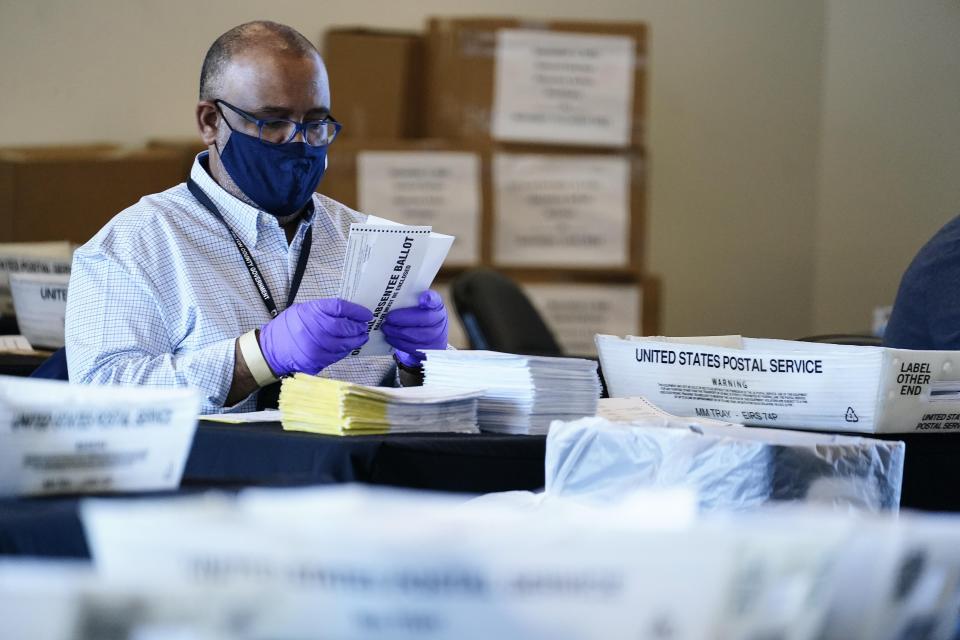Yes Virginia (and Georgia), undecided voters do exist. Here's how campaigns are courting them.
This is a column by Charlie Harper, an Atlanta-based public policy expert and a longtime contributor to the Savannah Morning News.
We’re roughly one month before voting begins in the general election. We often call this phase the “November election” but with the number of votes cast early either in person or by absentee ballot, it would be best to move away from the concept of an “election day”.
Get out the vote efforts for Nov. 8 certainly matter, but campaigns that hold dry powder past mid-October do so at their own peril.
Will fame alone be enough?: Celebrity candidates are running in the 2022 Georgia election
Opinion: Is 2022 the year of the split-ticket election? Yes, at least in Georgia
Conventional wisdom also holds that most voters don’t really engage in campaigns until after Labor Day. It seems hard to believe this given that campaigns now seem perpetual, but to many people, the day-to-day partisan gamesmanship is either noise or entertainment.

Those who don’t breathlessly follow every tweetstorm du jour or anxiously await “news” from Tucker Carlson or Rachel Maddow are generally content to live their lives and focus on the candidates – especially in down ballot races – closer to the time to make a decision.
Courting voters in the base, in the margins
The consultant class that runs campaigns and the media messaging that airs in parallel to them are increasingly focused on those who align with party identification. There is much less effort spent to persuade undecideds.
It’s much easier to keep a base voter angry and focused. It’s much harder to figure out what motivates a casual voter, target them effectively, persuade them to support your candidate or cause, then actually motivate them to show up.
And yet, these are often the voters that decide elections. When races are decided by slim margins, such as those in battleground states such as Georgia, campaigns must not only energize their base voters but must also be likeable to those with only a casual interest in political gamesmanship.
The parallel tracks of trying to inflame and motivate partisan bases while wooing open-minded voters are run simultaneously yet differently. Digital media allows direct voter targeting through social media and ad supported online streaming platforms. The same data collected from these channels allows for even sharper targeting of direct mail.

And yet, you’re still left with a subset of the general population that swings like a pendulum in each election. Many of the hyper-partisan voters believe these people don’t exist, as no one can possibly not understand or have a strong opinion on the direction the state and country should be taking.
Every election you can see many of these express sentiments on social media of “who are these undecided voters? How can they not know at this point who they need to be voting for?”
Here’s where you break the “undecideds” away from those who have yet to engage. Many of those who are “undecided” are torn, as elections have become a binary exercise in which all of a citizen’s interests and concerns are distilled into one choice. They must ultimately pick a red pill or a blue pill.
The 2016 and 2020 elections were dominated by “undecided” Republican leaning voters who were at a constant battle over whether they could accept Donald Trump – both his personal style as well as the checkered associates he surrounded himself with – in order to achieve their otherwise conservative objectives. The script this cycle has now somewhat flipped.
Flipping the script
The pledge in the 2020 election was a return to “normalcy”, and yet the past two years have been anything but. Pandemic closures and mask mandates extended well beyond what science supported. Vaccination requirements went from personal medical decisions to “show us your papers.”
The target demographic to swing votes in the last several Georgia election cycles has been suburban women. If you want to put a finer point on that, it’s been white married suburban women.

A case can be made that many could still be undecided this cycle. They could be weighing their pocket books, with the uncertain economic times ahead as the Federal Reserve tries to wrench fiscal excesses from our country’s economy. They could be weighing a Supreme Court that overturned Roe v. Wade, and the senators who will vote both on national laws regarding this, or the judges and justices who will make new rulings.
They could still be angry at the inconsistencies they saw from their local school systems for two years of pandemic shutdowns and virtual learning, and want more options for educating their children.
A single blue pill or red pill won’t reconcile their issues nor solve all their problems. And yet, we all have to take our medicine soon. Then we’ll repeat this again every two years.
This article originally appeared on Savannah Morning News: Georgia election 2022: Undecided voters may decide several elections.

